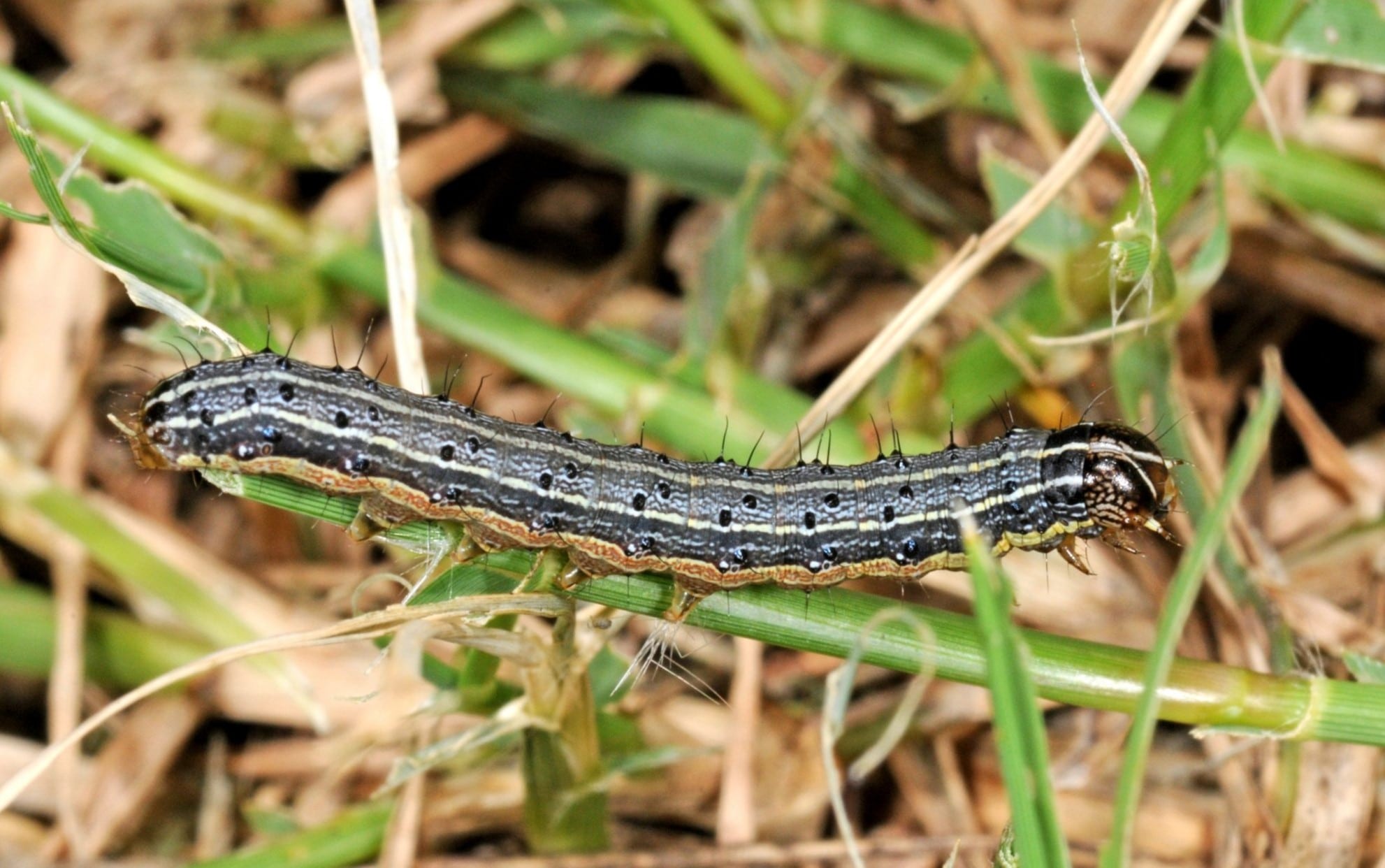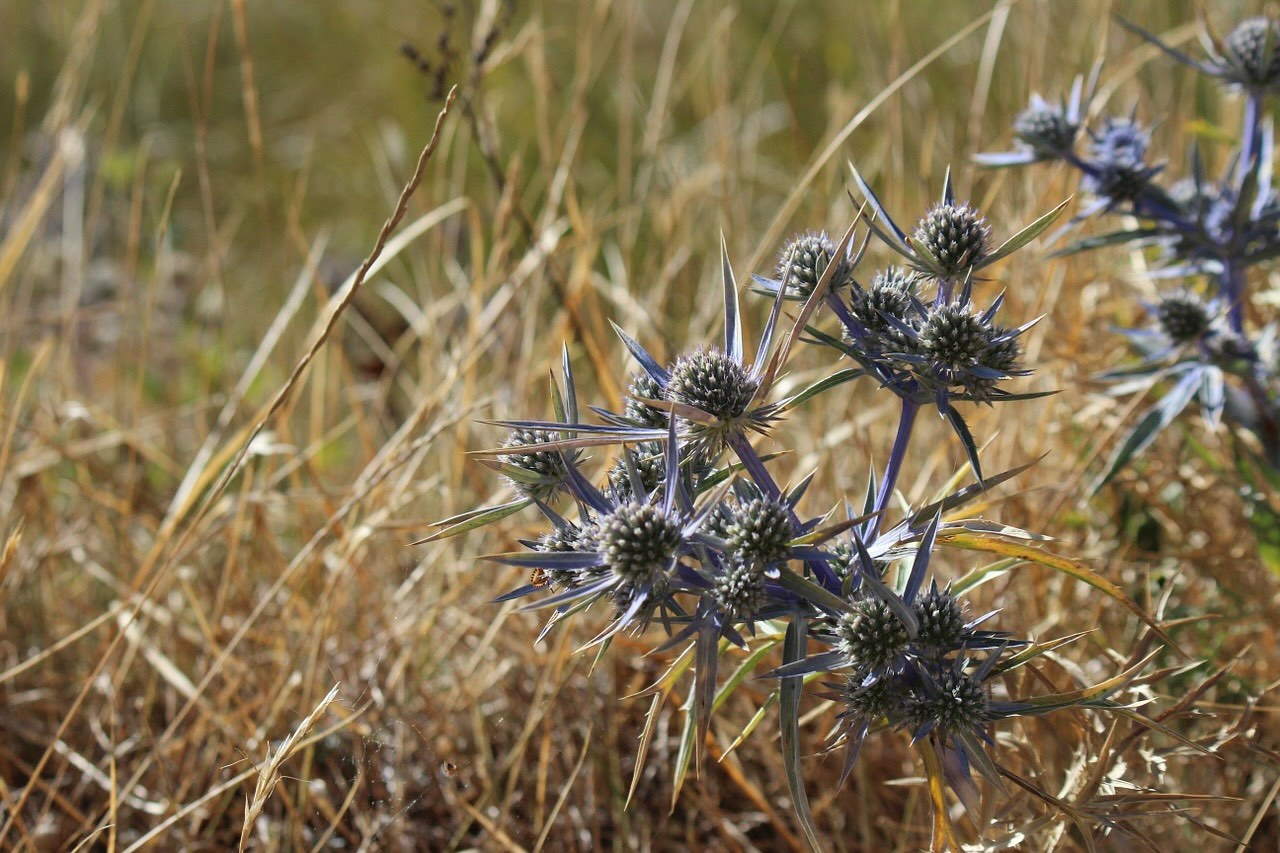Home>Gardening & Outdoor>Landscaping Ideas>How To Get Rid Of Armyworms In Grass


Landscaping Ideas
How To Get Rid Of Armyworms In Grass
Published: January 24, 2024
Learn effective landscaping ideas to eliminate armyworms from your grass. Discover expert tips and solutions for a healthy, pest-free lawn.
(Many of the links in this article redirect to a specific reviewed product. Your purchase of these products through affiliate links helps to generate commission for Storables.com, at no extra cost. Learn more)
Introduction
Welcome to the battle against armyworms in your grass! Dealing with these voracious pests can be a daunting task, but with the right strategies, you can protect your lawn and keep it looking lush and healthy. Armyworms are destructive insects that can quickly strip grass and plants of their foliage, leaving behind unsightly patches of brown, damaged turf. In this comprehensive guide, we will explore effective methods for identifying, preventing, and controlling armyworm infestations in your lawn.
Whether you’re a seasoned gardener or a novice homeowner, understanding the behavior and lifecycle of armyworms is crucial for maintaining a vibrant and thriving lawn. By learning how to spot the early signs of armyworm damage and implementing proactive measures, you can safeguard your grass from these persistent pests. From natural remedies to chemical control options, we will delve into a range of strategies to help you combat armyworm infestations and preserve the beauty of your outdoor space.
So, gear up and get ready to reclaim your lawn from armyworms as we embark on this informative journey to protect your grass and promote a pest-free environment.
Key Takeaways:
- Early detection and preventive measures, such as maintaining lawn health and encouraging natural predators, can help protect your grass from armyworm infestations and minimize damage.
- Embracing natural methods, like using beneficial nematodes and companion planting, offers eco-friendly ways to control armyworms while preserving a balanced lawn ecosystem.
Read more: How To Get Rid Of Grasshoppers
Identifying Armyworms in Grass
Before launching a counteroffensive against armyworms, it’s essential to accurately identify these pests and understand their impact on your grass. Armyworms, despite their name, are actually caterpillars rather than worms. These caterpillars can vary in color from green to brown, with distinct stripes running along the length of their bodies. Identifying armyworms early on can prevent widespread damage to your lawn.
One of the telltale signs of armyworm infestation is the presence of ragged, chewed grass blades, particularly in irregular patches across the lawn. Additionally, closely inspect the affected areas during the early morning or late afternoon, as armyworms are most active during these times. Keep an eye out for the larvae themselves, as well as their excrement, which resembles small pellets and can often be found near the damaged grass.
Another method for identifying armyworms involves conducting a “flushing” test. To perform this test, mix a solution of water and dish soap and pour it over the affected areas of the lawn. The armyworms, disturbed by the soapy water, will emerge from the grass, making it easier to spot and confirm their presence.
By familiarizing yourself with the appearance and behavior of armyworms, you can promptly detect their presence and take swift action to prevent extensive damage to your grass. Early identification is key to effectively managing armyworm infestations and preserving the health and aesthetics of your lawn.
Preventive Measures
Implementing preventive measures is a proactive approach to safeguarding your lawn from armyworm infestations. By incorporating these strategies into your lawn care routine, you can create an environment that is less hospitable to these pests, reducing the likelihood of an outbreak. Here are some effective preventive measures to consider:
- Maintain Optimal Lawn Health: A healthy and well-maintained lawn is better equipped to withstand pest infestations. Regularly mowing, watering, and fertilizing your grass can promote its resilience and minimize the impact of armyworm damage.
- Monitor Lawn Conditions: Keep a close watch on the condition of your lawn, paying attention to any signs of stress or damage. Early detection of armyworm activity allows for prompt intervention, preventing widespread destruction.
- Encourage Natural Predators: Create a habitat that attracts natural predators of armyworms, such as birds and beneficial insects. These predators can help keep armyworm populations in check, contributing to a balanced ecosystem in your yard.
- Limit Excessive Fertilization: While fertilization is essential for lawn health, excessive use of nitrogen-rich fertilizers can stimulate rapid grass growth, potentially attracting armyworms seeking lush vegetation to feed on.
- Practice Proper Irrigation: Avoid overwatering your lawn, as excessively moist conditions can create an ideal environment for armyworms to thrive. Instead, aim for deep, infrequent watering to promote healthy root development and discourage pest activity.
By integrating these preventive measures into your lawn care regimen, you can fortify your grass against armyworm infestations and minimize the risk of extensive damage. Proactive maintenance and a vigilant approach to monitoring your lawn’s well-being are essential components of effective pest management.
To get rid of armyworms in grass, you can use insecticidal soap or neem oil to spray the affected areas. You can also introduce natural predators like parasitic wasps or predatory beetles to help control the armyworm population. Regularly mowing and maintaining a healthy lawn can also help prevent armyworm infestations.
Natural Methods for Controlling Armyworms
Embracing natural methods for controlling armyworms offers an eco-friendly and sustainable approach to managing these pests without relying on synthetic chemicals. By leveraging the power of nature, you can effectively deter and reduce armyworm populations while maintaining a harmonious balance within your lawn ecosystem. Here are several natural methods to consider:
- Beneficial Nematodes: Introduce beneficial nematodes, microscopic organisms that parasitize armyworms, into the soil. These natural predators can help control armyworm populations and protect your grass from extensive damage.
- Diatomaceous Earth: Sprinkle food-grade diatomaceous earth in areas prone to armyworm activity. This natural substance, composed of fossilized diatoms, can physically disrupt the protective outer layer of armyworms, leading to dehydration and eventual mortality.
- Botanical Insecticides: Explore the use of botanical insecticides derived from plant-based compounds, such as neem oil or pyrethrin. These natural insecticides can effectively target armyworms while minimizing harm to beneficial insects and the environment.
- Companion Planting: Incorporate companion plants known for their ability to repel or deter pests, such as garlic, onions, or marigolds, near susceptible areas of your lawn. These companion plants can help deter armyworms and create a more inhospitable environment for their development.
- Manual Removal: Handpick armyworms from the affected areas of your lawn, particularly during the early morning or late evening when they are most active. Dispose of the collected armyworms in a sealed container or soapy water to prevent their return.
By embracing these natural methods for controlling armyworms, you can effectively manage pest populations while minimizing the impact on beneficial organisms and the surrounding environment. These eco-conscious approaches empower you to protect your lawn from armyworm damage while promoting a sustainable and biodiverse outdoor space.
Chemical Control Options
When natural methods alone may not provide sufficient armyworm control, incorporating targeted chemical control options can offer an additional line of defense against these persistent pests. It’s important to approach chemical control with caution, ensuring proper application and adherence to safety guidelines to minimize environmental impact. Here are several chemical control options to consider for managing armyworm infestations:
- Insecticidal Sprays: Selective insecticidal sprays formulated specifically for armyworm control can be applied to affected areas of the lawn. These sprays target armyworms while minimizing harm to non-target organisms when used according to label instructions.
- Systemic Insecticides: Systemic insecticides, available in granular or liquid formulations, are absorbed by the grass and translocated throughout the plant. When armyworms feed on the treated grass, they ingest the insecticide, leading to effective pest control.
- Bacillus thuringiensis (Bt): Bt is a naturally occurring soil bacterium that produces proteins toxic to certain insect larvae, including armyworms. Applied as a biological insecticide, Bt can provide targeted control of armyworm populations while posing minimal risk to non-target organisms.
- Professional Treatment: In cases of severe armyworm infestations or persistent challenges, seeking professional pest control services can offer tailored solutions and expertise in managing these pests effectively.
Prior to utilizing chemical control options, carefully assess the extent of the armyworm infestation and consider the potential impact on beneficial insects, wildlife, and the surrounding ecosystem. Always follow the instructions provided by the product labels and consider consulting with a qualified professional to ensure responsible and effective application.
By integrating targeted chemical control options into your pest management approach, you can address armyworm infestations with precision and minimize the impact on the overall ecological balance of your lawn.
Read more: How To Get Rid Of Crabgrass
Conclusion
As you journey through the battle against armyworms in your grass, it’s essential to equip yourself with a diverse arsenal of strategies to effectively manage and mitigate these persistent pests. By understanding the lifecycle of armyworms, implementing preventive measures, and exploring natural and chemical control options, you can safeguard the health and beauty of your lawn while promoting a sustainable and balanced ecosystem.
Identifying armyworms early on and staying attuned to the condition of your grass enables you to take proactive measures to prevent widespread damage. By maintaining optimal lawn health, encouraging natural predators, and practicing vigilant lawn care, you can fortify your grass against armyworm infestations and minimize the risk of devastation.
Embracing natural methods for controlling armyworms empowers you to harness the power of nature in managing pest populations while preserving the well-being of beneficial organisms and the environment. From beneficial nematodes to companion planting, these eco-conscious approaches offer effective alternatives to synthetic chemicals.
When natural methods may not suffice, integrating targeted chemical control options can provide an additional layer of defense against armyworms. It’s crucial to approach chemical control with care, ensuring responsible application and adherence to safety guidelines to minimize environmental impact.
As you navigate the realm of armyworm control, remember that a harmonious and thriving lawn is within reach. By combining vigilance, knowledge, and a commitment to sustainable pest management, you can reclaim your grass from armyworms and cultivate a vibrant outdoor space for enjoyment and relaxation.
Armed with these insights and strategies, you are well-equipped to face the challenge of armyworms in your grass, ensuring that your lawn remains a verdant oasis for years to come.
Frequently Asked Questions about How To Get Rid Of Armyworms In Grass
Was this page helpful?
At Storables.com, we guarantee accurate and reliable information. Our content, validated by Expert Board Contributors, is crafted following stringent Editorial Policies. We're committed to providing you with well-researched, expert-backed insights for all your informational needs.















0 thoughts on “How To Get Rid Of Armyworms In Grass”